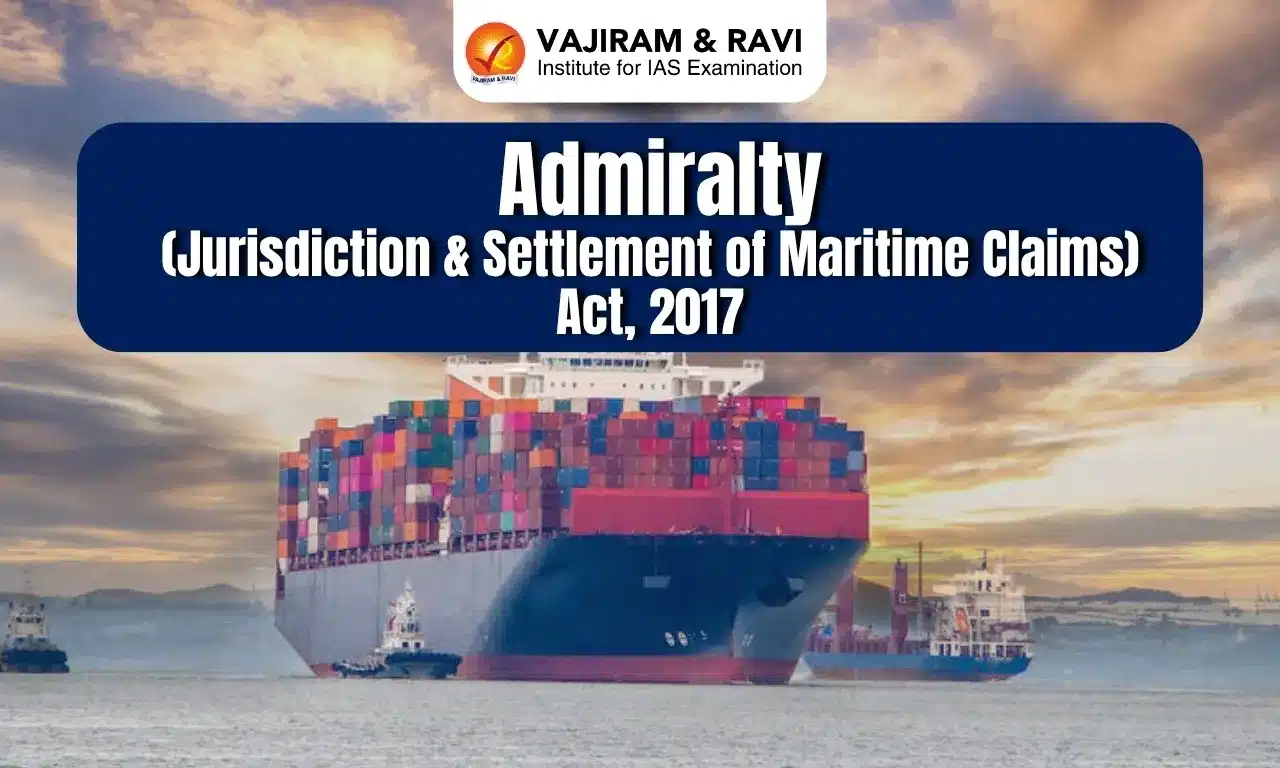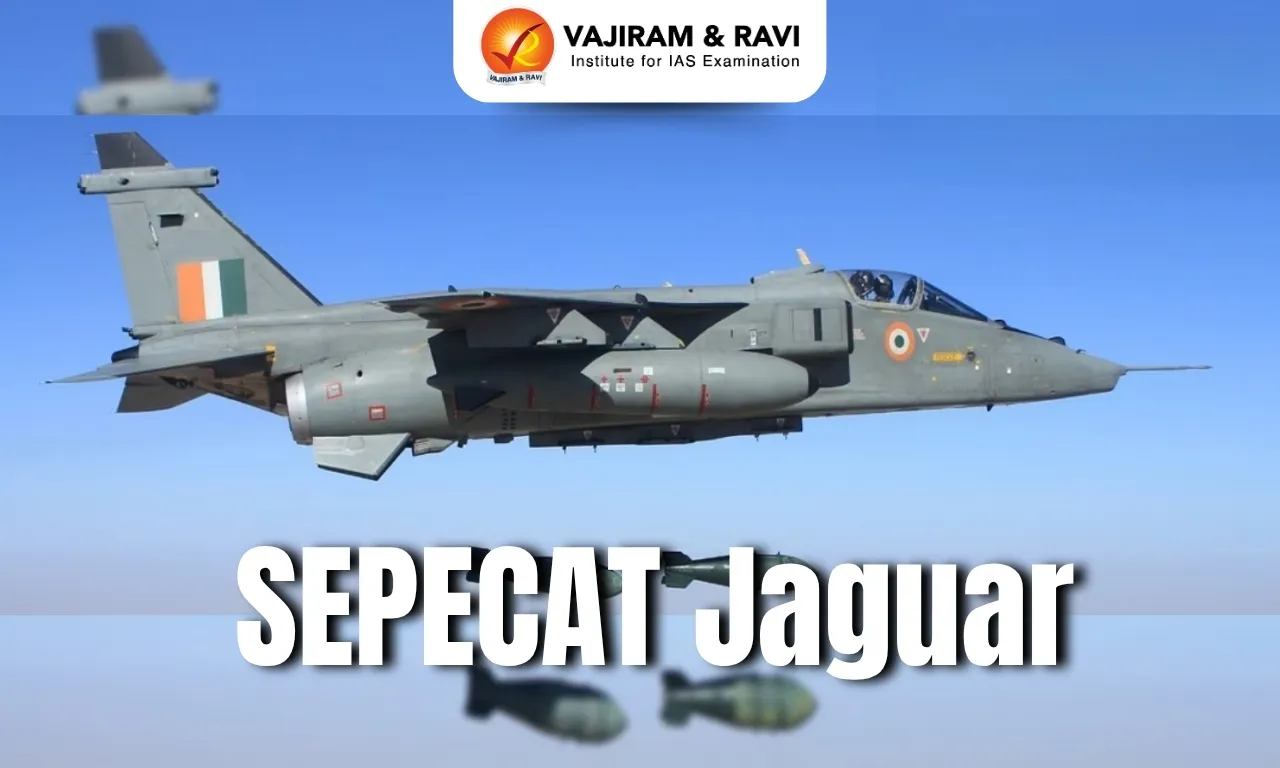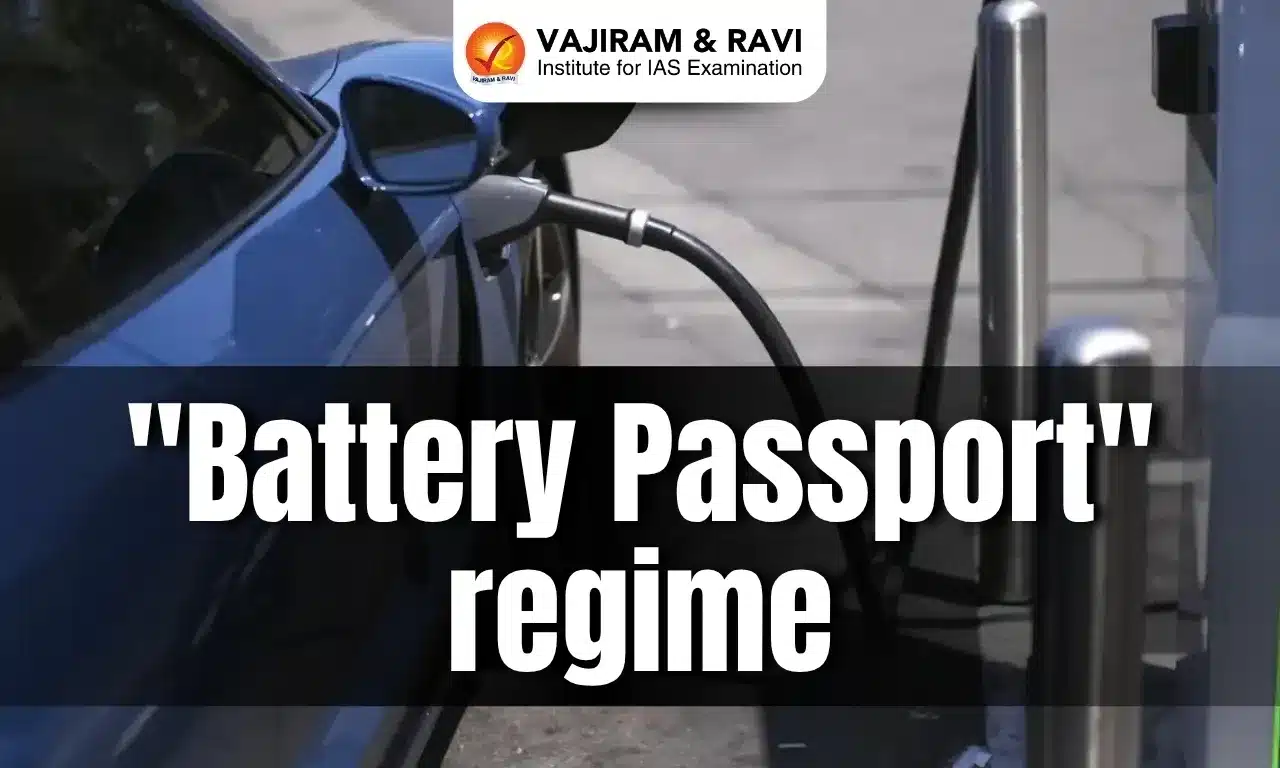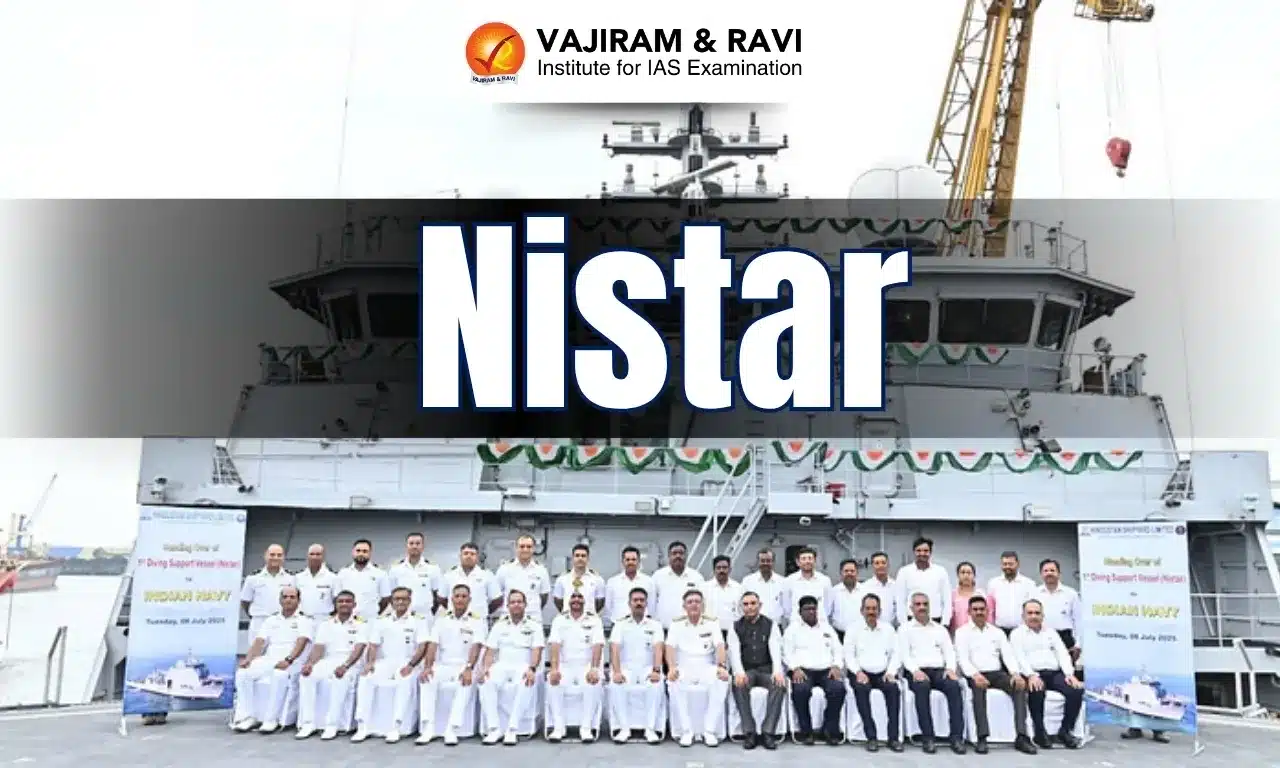Admiralty (Jurisdiction & Settlement of Maritime Claims) Act, 2017 Latest News
The Kerala High Court recently ordered the conditional “arrest” of Liberian container ship MSC Akiteta II, after the Kerala government filed an admiralty suit in the court under Section 4 of the Admiralty (Jurisdiction and Settlement of Maritime Claims) Act, 2017.
About Admiralty (Jurisdiction & Settlement of Maritime Claims) Act, 2017
- The Act consolidates the existing laws relating to the admiralty jurisdiction, legal proceedings in connection with the vessels, arrest, detention and sale of the vessel and other matters that are connected or incidental to the admiralty jurisdiction.
- The Act repeals the following British-era admiralty laws on civil matters:
- The Admiralty Court Act, 1861;
- The Colonial Courts of Admiralty Act, 1890;
- The Colonial Courts of Admiralty (India) Act, 1891; and
- The provisions of the Letters Patent, 1865, insofar as it applies to the admiralty jurisdiction of the Bombay, Calcutta, and Madras High Courts.
Applicability of the Act
- The Act applies to every vessel, irrespective of the place of residence or domicile of the owner.
- Exception to the Applicability: The Act shall not apply to the following vessels-
- Inland vessel defined in clause (a) of sub-section (1) of section 2 of the Inland Vessels Act, 1917;
- A vessel under construction that has not been launched unless it is notified by the Central Government to be a vessel for the purposes of the Act;
- A warship, naval auxiliary, or other vessel owned or operated by the Central or a State Government and used for any non-commercial purpose; and
- Foreign vessel which is used for any non-commercial purpose as may be notified by the Central Government.
Admiralty Jurisdiction
- The Act conferred admiralty jurisdiction to eight High including the High Court of Calcutta, Bombay, Madras, Karnataka, Gujarat, Orissa, Kerala and Hyderabad.
- The jurisdiction of the High Courts in respect of all maritime claims be exercisable over the waters up to and including the territorial waters of their respective jurisdictions.
Maritime Claims
- The High Court having admiralty jurisdiction is empowered to determine any question against any vessel relating to a maritime claim arising out of any
- dispute regarding possession or ownership of a vessel;
- loss or damage caused by the operation of a vessel;
- loss of life or personal injury occurring whether on land or on water, in direct connection with the operation of a vessel;
- loss or damage to or in connection with any goods;
- agreement relating to the carriage of goods or passengers on board a vessel, whether contained in a charter party or otherwise;
- agreement relating to the use or hire of the vessel, whether contained in a charter party or otherwise, etc.
Jurisdiction over Vessels (Arrest of Vessels) and Persons
- Courts with admiralty jurisdiction exercise their authority over both vessels within their territorial waters (jurisdiction in rem) and persons within their territory (jurisdiction in personam).
- The usual practice followed by the courts having admiralty jurisdiction to secure the maritime claim is to arrest the vessel.
- The main purpose for the arrest of the vessel is to obtain the security for the satisfaction of the judgment.
- Thus, the High Court having admiralty jurisdiction may order arrest of any vessel if the High Court is satisfied that
- the owner of the vessel at the time when maritime claim arose is liable for the claim;
- the claim is based on a mortgage or a charge of the vessel;
- the claim is related to the possession or ownership of the vessel, etc.
- Further, a claimant seeking the arrest of a vessel may be required to furnish an unconditional undertaking on the terms determined by the High Court to secure the defendant from any loss or damage that may result due to such arrest (for example, if the arrest is wrongful or unjustified).
- The Act also provides that the High Court ordering the sale of a vessel can determine any questions relating to the title to the proceeds of the sale.
Source: IE
Admiralty (Jurisdiction & Settlement of Maritime Claims) Act, 2017 FAQs
Q1: The Admiralty (Jurisdiction & Settlement of Maritime Claims) Act, 2017 primarily deals with:
Ans: Jurisdiction and legal proceedings related to vessels
Q2: The Admiralty jurisdiction under the Admiralty (Jurisdiction & Settlement of Maritime Claims) Act, 2017 has been conferred to how many High Courts?
Ans: Eight High Courts including the High Court of Calcutta, Bombay, Madras, Karnataka, Gujarat, Orissa, Kerala and Hyderabad.
Q3: Why is the arrest of a vessel under the Admiralty (Jurisdiction & Settlement of Maritime Claims) Act, 2017, primarily done?
Ans: The main purpose for the arrest of the vessel is to obtain the security for the satisfaction of the judgment.










